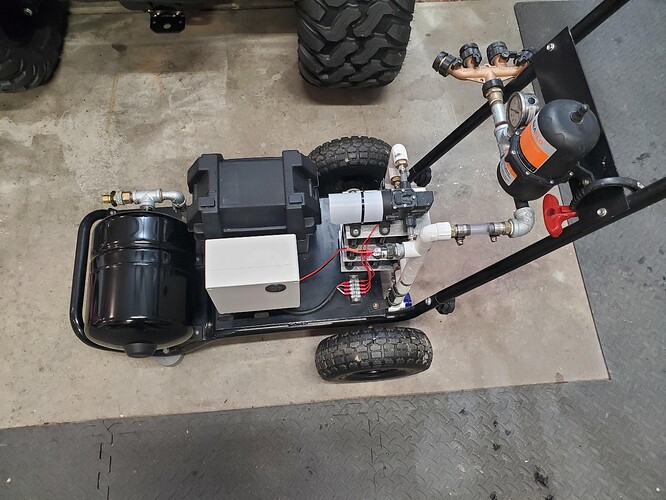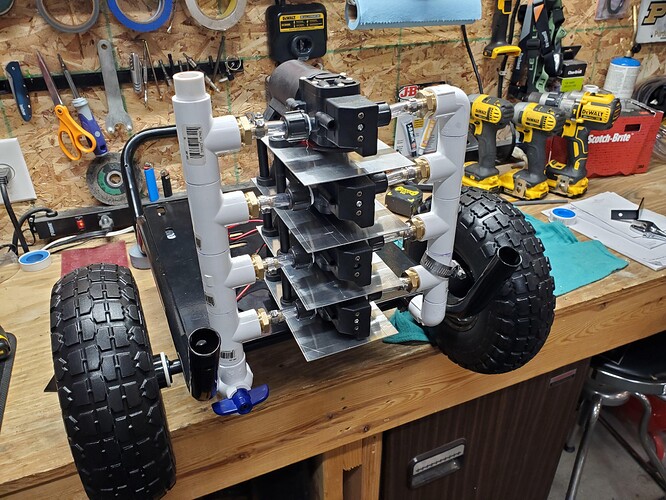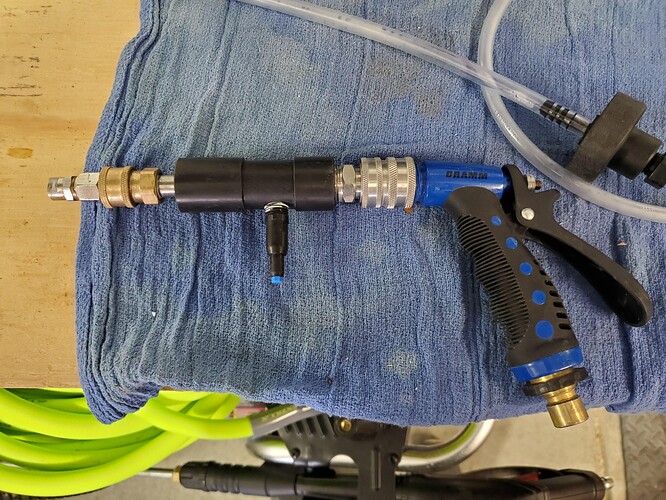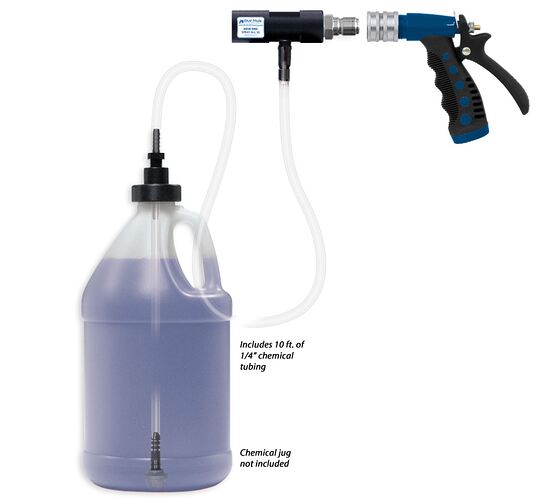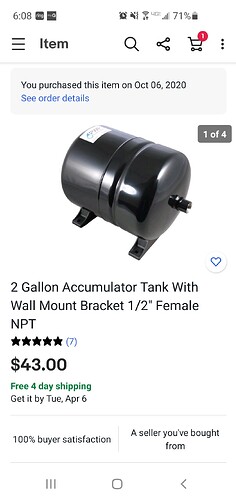Kind of a long read, but I wanted to make sure I explained fully.
When I first joined I attempted to show what I use for cleaning houses, but I failed to do a good job explaining why I do it the way I do and the thread went south. Again, this was my fault for not properly explaining why I do this. This setup is not designed for the guy who washes 5-6 houses a day all week. I do this as a side business and don’t wash more than 2 houses a day, maybe 4-6 a week. The reason I build this setup and not the traditional pressure washing / soft washing setup is because I don’t have a vehicle or trailer dedicated to washing, therefore I can’t mount a large pressure washer or tanks. I need my rig to be easily transported and taken in and out of my truck. I have a tool box that keeps all my hoses, guns and chemicals, so all I need to do is grab this rig and my ladder and I’m out washing.
This setup simply takes normal water pressure from the spigot and boosts it to 100 psi. This allows me to use a Blue Mule Spray-all gun with #50 nozzles to apply cleaner without needing a ladder 95% of the time. With normal tap pressure of 60 psi or so, it will not hit two story peaks. With this rig it maxes out at 100, but can maintain about 70 psi while spraying allowing me to put out around 6-6.5 gpm with enough distance to hit two story peaks and chimneys. I carry 0, 5, 25, and 65 deg tips. The gun allows to change out the orifices to dial in exact ratios, so I typically use a 19:1 with straight 12.5% and elemonator. If the house is really bad, I use a 12:1. It simply connects to a jug, so yes I have to carry a gallon jug around while spraying, but the tube is long enough I just hold it down by my side, so it’s not really a big deal. I’m much more mobile than pulling form a 5 gallon bucket. For rinsing, I just use the same rig and switch to a garden hose sprayer. At this kind of pressure and flow it does a good job rinsing, not 8 gpm pressure washer good, but pretty good. A normal house for me in my area is two story, 3000 sq. ft. homes. They typically take my 1-1.5 hrs. Ranches take :45-1. From what I’ve read, I feel like that’s on par with most house washer with traditional setups.
As you can see, I have a series of 4 cheap Chinese pumps. There is a couple reasons for this. The main one is the high inlet pressure you have with hooking up right to the spigot. I tried a couple higher end pumps, but they leaked and when I read the manuals, most say you cannot exceed 30 psi on the inlet. I found that very true. Last thing I wanted was to keep trashing $200 pumps. These cheap pumps don’t seem to care. I get a couple drips here and there, but they just keep going. Redundancy is another reason. They are small and don’t flow much, so more than one is needed to feed a #50 nozzle. In my testing I found I can get the job done with 3 of these, but I built my latest design with 4 in case a pump craps out. They are cheap at about $15 each, so I don’t worry if one fails and I keep a few extra on hand. I’ll say, surprisingly these cheap things hold up pretty darn good. I’ve been using them for 3 years now and have only had one completely die. They do wear out over time and you can hear them getting weak and losing pressure. Again this is where the redundancy comes in handy, weak pumps don’t stop me from completing a job. At a minimum, at the end of each season I replace all of them. During the year, I think maybe 3 times I changed out a pump, so overall it’s been cheap to operate. I average about 130-140 houses a year, so $90 a year or so in pumps is not bad.
I have a 2 gal accumulator at the inlet to keep a constant pressure on the inlet. It helps when houses have poor water pressure and someone runs a sink or flushes a toilet inside. My first couple designs didn’t have this tank and I could tell when pressure fluctuated. From there it splits into the 4 pumps, then back into one outlet. They are controlled by a 100 psi pressure switch on the outlet. Then I added a small tank to even out the flow. Inside the while box is a fuse panel to individually fuse each pump, a relay and then a voltage gauge. I’m able to run a small 35 amp/hr battery which really keeps the weight down. This isn’t heavy at all and I lift it up over the bed sides, I don’t even bother with lowering the tailgate. I just roll it up to a spigot, connect my hoses and go.
Sorry for the long read, but I though others might be able to adapt this method, or at least give some ideas of other ways to clean. It’s worked out awesome for me for houses. I have a 4/4200 pressure washer for when I need it, but 90% of my jobs are soft washing. I’ve learned a ton on this site, so thank you to everyone for all the information.
